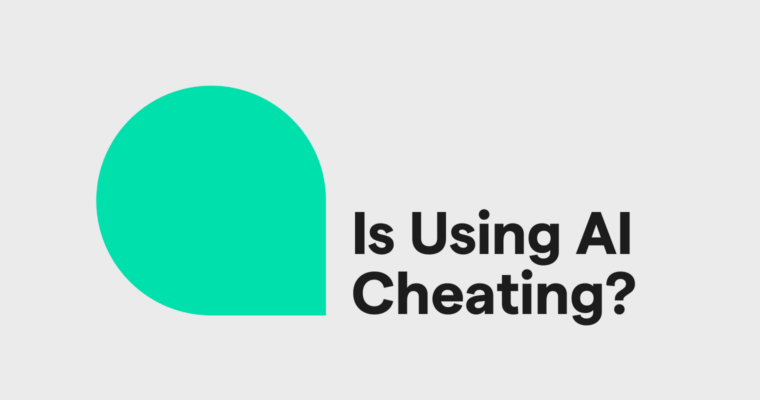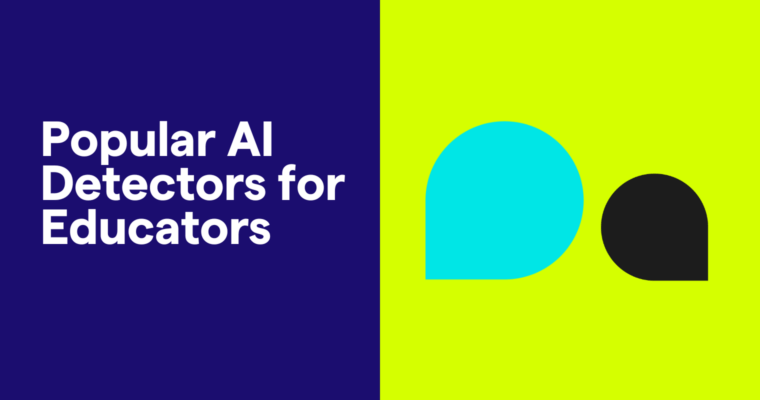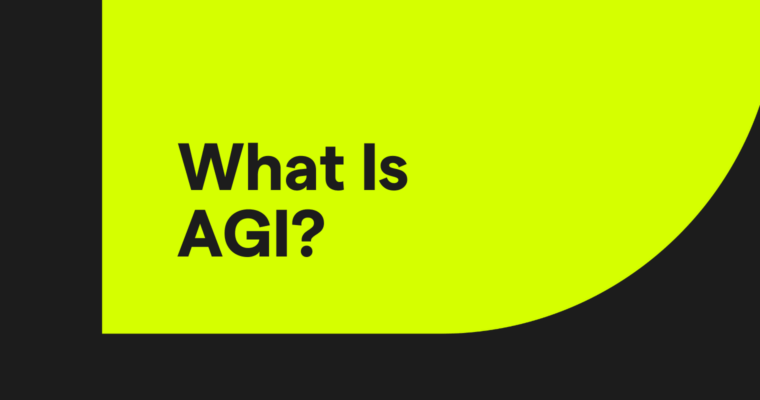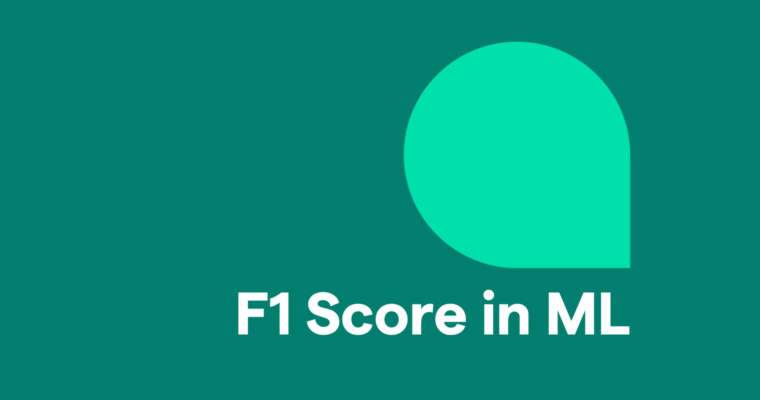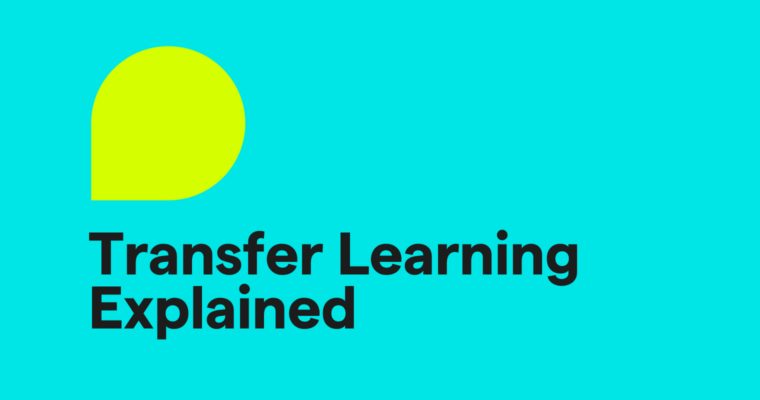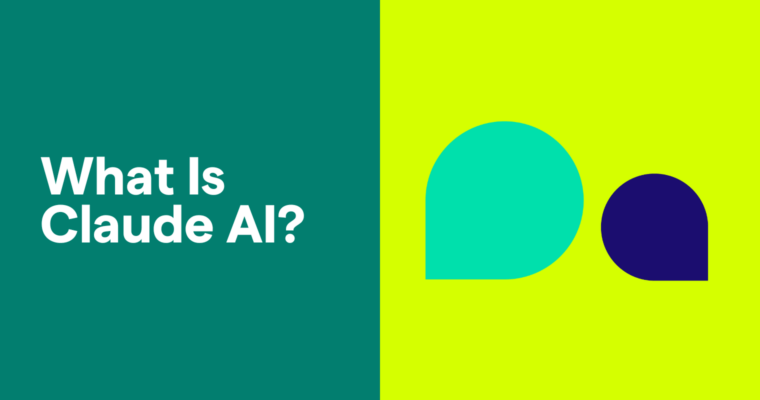
Chatbots have emerged as one of the most common forms of generative AI. Claude AI is a chatbot built with ethics and safety in mind. Here’s an overview of what Claude AI is, how to use it, and which limitations you should be mindful of.
Table of contents
- What is Claude AI?
- How Claude AI works
- Claude AI vs. ChatGPT
- How to use Claude AI
- Advantages of Claude AI
- Disadvantages of Claude AI
- Conclusion
What is Claude AI?
Claude AI is an artificial intelligence chatbot powered by large language models (LLMs). Claude responds to your prompts in a human-like manner; you can converse with Claude using natural language, just as you would with another person. Claude can generate various forms of text content, such as summaries, creative works, and code. You can also upload images and text-based files to Claude to add context to your prompts.
Claude was first released in March 2023 and has been continually updated with new models and features.
What is Anthropic AI (the company behind Claude AI)?
Claude was developed by Anthropic, a company that describes itself as an AI safety and research firm. Based in San Francisco, Anthropic was founded in 2021 by former OpenAI (the company that makes ChatGPT and DALL-E) executives and researchers. Anthropic, like many other AI research companies, focuses on creating cutting-edge AI models. Among the crop of companies developing AI models, Anthropic is known for focusing on the safety of AI models. They want to build AI systems that are reliable (do what they’re supposed to every time), interpretable (give an understandable rationale for outputs and decisions), and steerable (you can control their behavior). The Claude family of LLMs is one of the main results of this mission.
How Claude AI works
Underlying the Claude AI chatbot is an LLM, also named Claude, that is trained to recognize patterns and associations in large volumes of text.
The Claude LLM is based on the transformer architecture. Transformers use a special mechanism called “attention” that contextualizes words based on the preceding words in the input. The transformer architecture is also used in other popular generative AI tools such as ChatGPT and Google Gemini.
The Claude LLM was trained with publicly available data from the internet, content licensed from third parties, and data provided by users and crowd workers for training. By training on the billions and even trillions of words on the internet, the LLM learns statistical patterns between words. This lets the LLM generate good responses to your prompts.
Another important component of Claude is Constitutional AI—Anthropic’s way of making sure Claude adheres to principles of safety and harmlessness. Constitutional AI consists of defining rules that the model must follow in generating responses. Then, by training the model on many good and bad examples of responses, the model learns to follow the rules, leading to a safer, more steerable model. Here are some examples of the principles Anthropic incorporates into its models:
- Please choose the response that most supports and encourages freedom, equality, and a sense of brotherhood.
- Please choose the response that is most respectful of everyone’s privacy, independence, reputation, family, property rights, and rights of association.
- Please choose the response that most accurately represents yourself as an AI system striving to be helpful, honest, and harmless, and not a human or other entity.
Claude AI vs. ChatGPT: Which is better?
It’s understandable to be curious about how ChatGPT and Claude AI compare because Claude was developed as a competitor of ChatGPT. Both chatbots have advantages and disadvantages. Therefore, it’s important to take certain factors into account when deciding which one to use.
| Feature | Claude AI | ChatGPT |
| Data usage and storage | Doesn’t use prompts or responses for training without permission; retains data for 90 days | May use conversations for training unless you opt-out |
| Performance and capabilities | File uploading, lacks image creation, lacks internet search, runs code | Image creation, internet search is available in some versions, doesn’t run code |
| Ethical and safety focus | Uses Constitutional AI principles for self-moderation | Uses reinforcement learning from human feedback (RLHF) |
| Free tier available | Yes, with limited access to models | Yes, with limited access to models |
| Access | Web, iOS, Android, API, desktop | Web, iOS, Android, API, desktop |
| Customization and use cases | Cannot create fine-tuned models | Can create fine-tuned GPTs |
| Context window | 200,000 tokens (about 350 pages) | 128,000 tokens |
Data usage and storage
For privacy-conscious users, Claude is the friendlier choice. In both data usage and storage, Anthropic defaults to privacy-friendly settings. OpenAI requires users to opt out of giving them access to your data.
Data usage
Anthropic, by default, doesn’t use your data to train its models. However, here are three specific circumstances in which they will:
- You explicitly tell Anthropic to use your data for training
- Your conversation is flagged for safety reasons
- You provide direct feedback on the model’s response (usually by clicking the thumbs-up or thumbs-down).
OpenAI, in contrast, defaults to using your data to train its models. To stop this usage, you need to opt out of the settings for your account.
Data storage
By default, Anthropic retains your conversations and data for 30 days before deleting them. If one of the three above cases applies, your data will be kept for longer. OpenAI retains your data as long as your account is active, unless you delete data. Any deleted data is removed from OpenAI’s systems within 30 days.
OpenAI may use your conversations with ChatGPT for training unless you opt out. You can opt out by changing the settings on your account.
How they’re moderated
Anthropic and OpenAI have measures to discourage toxic prompts and harmful responses. However, their approaches to content moderation are different.
Since Anthropic bills itself as an AI safety research company, it’s open and up front about its ethical practices. As part of Anthropic’s commitment to AI safety, all of its models incorporate the code of ethics outlined by Constitutional AI principles.
According to the Anthropic team, their approach allows companies to scale oversight as AI models grow more sophisticated. Claude AI can self-moderate without the need for human resources and without exposing people to large amounts of toxic content. It’s also easier to observe how it performs against a set of principles and adjust when needed.
ChatGPT is fine-tuned for safety through a process called reinforcement learning from human feedback (RLHF). With RLHF, human reviewers rate the chatbot’s responses for bias, harm, and other unwanted characteristics.
What they can do
Claude and ChatGPT offer different capabilities, depending on which version of the platforms you use.
Claude’s free tier is more expansive than ChatGPT’s. With the free version of Claude, you can upload files, which you can’t do with ChatGPT. Claude is also available via an app for Slack.
However, ChatGPT Plus can do more than Claude Pro. ChatGPT Plus offers image creation through DALL-E and voice chat, neither of which is offered with Claude Pro. ChatGPT is also available via a mobile app.
Knowledge cutoff
Most generative AI platforms have a cutoff date for their knowledge base, so they can provide information only up to a certain date. Claude has more up-to-date information than ChatGPT does. Claude’s training dataset ends in April 2024, while ChatGPT’s knowledge cutoff for GPT-3.5 and GPT-4 is October 2023 However, ChatGPT is able to search the internet, so it can find up-to-date information as well. Claude cannot yet, but this may change since Anthropic just announced Tool use.
Plugins and extensions
If you’d like to integrate generative AI with other services, ChatGPT offers a marketplace of plugins that you can integrate with the chatbot. These add-ons can help you do things like search for travel accommodations or read webpages. Some plugins are built by OpenAI, while others are from services that you may already use, like Kayak and OpenTable.
Claude doesn’t offer any plugins.
How to use Claude AI: 6 ways to get started
You can use Claude AI for various purposes, from creating original content to talking through a tough decision. Here are some of the things you can try with Claude:
1 Engage in natural conversation
Claude is capable of understanding natural language prompts and dialoguing with people. You can use slang and idioms in your prompts, and Claude will understand them.
Here are some examples of conversations you can have with Claude:
- Bounce around party theme ideas.
- Engage in thought experiments on philosophical topics like Schrödinger’s Cat or the Ship of Theseus.
- Discuss which college major to choose by considering various factors.
- Walk through a complex math problem.
- Get recommendations for places to travel based on your interests and experiences.
2 Get educational or helpful information
You can use Claude to supplement research or ask questions you’re curious about.
For example, you can use Claude to do the following:
- Ask what tools you need to mount a television.
- Find out when the major bank holidays are in India.
- Walk through the steps for creating homemade pasta.
- Learn the names of influential European artists from the 17th century.
- Explore folklore from Central America.
3 Content writing
With Claude, you can write all kinds of text-based content. Simply provide the format of your content, what you want it to say, and the style you want to use.
Here are some ways to use Claude AI for content generation:
- Draft business memos.
- Produce an outline for a short story.
- Make a chore list for the family.
- Create prompts for journaling.
- Write a letter to your elected officials.
If you’re looking for an AI tool that can help you write more efficiently, consider Grammarly. Grammarly is an AI writing assistant that can assist you with writing a variety of content, such as business documents, email replies, thesis papers, and more. Furthermore, unlike Claude AI or ChatGPT, you won’t have to worry about switching contexts. Grammarly works where you already write, making it a convenient and efficient tool for improving your writing. Navigate responsible AI use with Grammarly’s AI checker, trained to identify AI-generated text.
4 Summarize large volumes of text
Claude can summarize text that you copy into the prompt box or upload in a file. It accepts several file types, including PDFs, TXTs, CSVs, and Docx files.
You can use Claude for the following tasks:
- Upload a PDF of a novel and ask for the main plot points.
- Paste a long email and ask for the tasks it outlines.
- Upload a report with charts and graphs and ask for a summary of the key data points.
- Paste the transcript of a speech and ask for the main themes.
- Upload meeting notes and get the most important takeaways for people in your department.
5 Coding
Claude can write code in most major programming languages, though it’s particularly effective with Python.
Try using Claude for these coding tasks:
- Insert a code fragment and get an explanation of what the code does.
- Take a snippet of old code and update it to be more efficient.
- Get feedback on best practices to use to improve existing code.
- Write new code to perform a specific function.
- Identify potential errors with existing code.
6 Visual processing
You can upload images to Claude AI and ask it to describe or analyze them.
Here are some ways to use this feature:
- Transcribe a handwritten note.
- Upload a photo of a plaque at a historical site and ask for more information about the location’s history.
- Upload an image of a place and use it as inspiration for a short story outline.
- Describe the items in an image for someone who is visually impaired.
The advantages of using Claude AI
Claude offers advantages that promote AI safety and allow you to use the chatbot efficiently, even for complex tasks.
Emphasis on safety
Meeting high ethical standards is a core part of Claude’s functionality. Anthropic developed Claude to demonstrate how to make AI safe. The company is very up-front about its core views on AI safety:
- AI capabilities will rapidly accelerate and may one day equal or exceed human-level performance on many tasks.
- As AI grows more powerful, researchers must implement robust guardrails and ensure their platforms stay within them.
- By researching multiple approaches to AI safety, it’s possible to create helpful, honest, and harmless systems.
With Constitutional AI, Claude can train itself to avoid harmful requests and responses. Furthermore, the principles guiding Constitutional AI are publicly available. Generative AI platforms are advancing rapidly, and transparency around ethics benefits us all.
Large context window
All generative AI platforms have thresholds for how much information they can process before the platform starts to lose the context of that data. This is called the context window. Claude’s context window is particularly large at 200,000 tokens, which is equivalent to 350 pages of text.
This large context window makes Claude particularly powerful for parsing through lengthy documents. You can also add more context to your prompts. For example, if you’re brainstorming marketing ideas, you can upload a detailed research report on your audience, market, and previous performance. Claude can use that report to create a more tailored, relevant response.
Having a larger context window also allows for more extensive, relevant responses. Claude can generate long-form content and stay on topic, which is particularly useful for complex, nuanced subjects.
Speed
Claude is highly efficient. According to Anthropic, Claude 3 can process roughly 30 pages of text per second and read dense research papers in less than three seconds, three times faster than its peers. This speed, and its lengthy context window, further enhance Claude’s ability to process large documents quickly.
The drawbacks of using Claude AI
No generative AI platform is perfect. Claude has some drawbacks related to its capabilities and potential inaccuracies.
Limited capabilities
Because Claude is a text generation tool, its capabilities aren’t as expansive as those of some other platforms. If you are looking for a generative AI platform that can create text and images all in one tool, you can’t do that with Claude.
It also doesn’t offer plugins, which allow you to customize your experience with generative AI. For instance, if you’re on a fitness journey, you can use plugins that calculate calories and macros for various meals. Because Claude doesn’t offer plugins, you can’t incorporate those extra customizations.
Lack of up-to-date information
Claude’s knowledge base is updated regularly, but it’s typically several months old. It doesn’t have real-time information and cannot search the internet. If you want up-to-date information on topics like the economy, laws and regulations, and pop culture news, Claude may not be your best option.
Inaccurate responses
Although Claude was trained on a massive amount of data, it can sometimes generate inaccurate responses. These inaccuracies, called hallucinations, are an issue with all generative AI platforms. Generative AI was made to create content that could have been convincingly made by a human, not to verify that content for accuracy.
Because of these hallucinations, it’s important to verify Claude’s responses, especially in cases where accuracy is critical, such as in academia or business communications.
Claude AI: A chatbot built for safety
Claude is a generative AI chatbot built with ethics and safety in mind. Because it incorporates the Constitutional AI model, Claude follows a set of principles to generate helpful, honest, and harmless responses.
Claude’s code of ethics, speed, and ability to process large volumes of information enable you to efficiently leverage AI for complex analysis and content generation. However, it’s important to be mindful of potential inaccuracies and limited capabilities.
Claude is one of the many generative AI tools disrupting how we create, research, and interact with the systems we use. These tools are constantly changing and evolving. Keeping an open, curious mind will allow you to keep up with the pace of change and use generative AI safely and wisely.
Claude AI FAQs
What does Claude AI do?
Claude helps with various tasks including writing, analysis, coding, math, research, teaching, and creative projects. It can answer questions, help solve problems, write code, assist with editing and writing, and explain various topics. You can also engage in conversations with Claude, similar to how you would with another person.
How did Claude get its name?
The name “Claude” is in reference to mathematician Claude Shannon, who was known as the “father of the Information Age.”
Can Claude AI access the internet?
No, Claude is unable to access the internet. It can only work with information that’s directly shared in the conversation. However, this may change in the future, as Anthropic just announced tool use.
Is Claude AI better than ChatGPT?
The answer depends on your specific needs. Claude may be better for in-depth analysis or processing long documents. It’s also more suited for coding and technical writing. On the other hand, ChatGPT may be the right choice if you need internet browsing or prefer quick, casual conversations.
Can you use Claude AI for free?
Claude is available for free with daily usage limits. The limits vary based on demand. The Claude Pro plan offers five times more usage for a monthly subscription. In addition to expanding the daily limits, Claude Pro offers priority access during periods of high demand, early access to new features, and the ability to use the latest, most intelligent model.
How do I get access to Claude AI?
You can access Claude by visiting the web interface at claude.ai. If you’re looking for the Anthropic API key for integrations, you can access it via its documentation.


